Spring and summer is a time that cannot be imagined without fresh vegetables and greenery. Of course, the greens can always be bought in winter in any supermarket, but much more pleasant to eat useful food, grown independently. The main character of this article will parsley - the plant beloved by many mistresses. No festive table costs without salads decorated with parsley, or sandwiches, meat dishes, fish, etc. If you have a cottage plot, but you have never grown parsley, then it is very in vain. This unpretentious herb was widespread not only in cooking, but also traditional medicine and cosmetology. In this article, let's talk about the beneficial properties of parsley and why it is worth growing it. You will also learn the entire sequence of agrotechnical actions when growing parsley in the open soil. Those who have no opportunity to grow parsley on the garden will receive valuable information on the cultivation of this useful herb on her window sill.
Petrushki composition
Translated from Greek, parsley means "stone celery". This plant was widely distributed in many countries due to its spicy taste and rich composition. In ancient Greece, Parsley was considered even sacred grass. So, what is this useful contained in the usual and familiar to anyone parsley?
- Vitamin C. If you will use a parsley daily, then replenish the necessary concentration of vitamin C in the body. This vitamin in parsley is even more than in Lemon.
- Carotene. By the content of carotene, Parsley overtakes carrots.
- Vitamin A.
- Folic acid.
- Potassium.
- Magnesium.
- Iron.
- Flavonoids.
- Inulin.
- Phytoncides.
- Essential oil.
10 facts in favor of growing parsley
Such a rich in vitamins and nutrients, the composition of parsley makes it a real assistant in the treatment of many diseases.
- Parsley is used as an expectorant with bronchitis.
- Parsley lowers blood sugar and has a beneficial effect on the cardiovascular system and therefore is ideal for use in food diabetes mellitus.
- Parsley cleans the body and displays slags from it.
- Parsley regulates menstrual cycle in women.
- Petrushki decoction advise to take with different inflammatory diseases, kidney stones.
- Parsley is successfully used in the treatment of obesity.
- Parsley remarkably removes itching from insect bites, especially the bees.
- Petrushka is valued in dentistry. Having won the leaves of parsley, you get rid of the unpleasant smell of mouth.
- Parsley is appreciated and ophthalmologists. Due to the high content of vitamin A, Parsley has a beneficial effect on weakened vision.
- Petrushka has been applied in cosmetology. Possessing excellent bleaching, parsley helps get rid of freckles and pigment spots on the face.
Who should not use parsley in food
Speaking about the benefits and numerous advantages of parsley, it is impossible not to say about her possible man. The maximum permissible value of this spices per day for a person is about 4 tbsp. Otherwise, allergic reactions may occur. Perceive all the same parsley as a spice, the spice that is only added to the food, and do not take into the food as an independent dish. Parsley does not recommend taking pregnant women, people with kidney diseases, with inflammatory processes in the body. Any vitamins are good, but only in moderation. This also applies to parsley.
Picture photos
Types and varieties of parsley
There are two types of parsley:
- root;
- sheet.
Root parsley is grown in order to further use the roots. They are added both in various dishes and for the manufacture of healing decoctions. The leaf parsley is valued due to its juicy and spicy pulp of leaves. Such parsley is widely used in cooking. Each of these species has its own varieties. Read more consider some of them.
Varieta sheet parsley
- Parsley Astra. If you want to enjoy early greens, then boldly choose this variety for planting. Crispy leaflets of this parsley can be cut on 55-60 days. In place of the cut willingly grow new sockets. The variety is very crops and is suitable for growing both in the open and closed soil.
- Ordinary sheet parsley. Mid-line variety. Dark-green leaves have a strongly dissected form. The variety is suitable for a multi-sized cutting and distinguished by high yield.
- Parsley Breeze. Mid-line variety. Its main advantage is the ability to continue to save a fresh look after cutting and not shrust. That is why those people who grow greens for sale often choose this particular variety. Leafs are smooth, slightly wavy, but not curly.
- Parsley Gloria. Mid-length variety, which also remarkably retains fresh appearance for a long time. Suitable for both freezing, and for consumption in the fresh form.
To have fresh greens on the table all summer and the beginning of autumn, then plan the varieties of different maturation terms. The most popular lateral varieties are an Italian giant, Katyusha, Green Crystal, Carnival, etc.
Varieties of root parsley
- Sugar parsley. Cone roots of this variety reach a length of 30 cm and a weight of 30-60 grams. Root vegetables white with little gray shade have excellent taste qualities for that and loved by many gardeners.
- Parsley Alba. Late-ripening varieties, one of the important properties of which is an impressive mass of roots - 220-290 gr. Also, the root has no small lateral roots. Well kept and has a high yield.
- Harvest parsley. Root vegetables are juicy white flesh, well kept.
- Parsley Final. Cone-shaped fruits grow weighing up to 200 grams.
Among the favorite gardeners root parsley varieties worth noting and Tops and Roots, Good Morning Eagle, Doctor, etc.
How to grow parsley
Parsley - undemanding plant. But, if you want to get really beautiful and rich harvest lush and bright green parsley, make sure you listen to the advice of its cultivation. The first step is to determine the grade you want to grow. Mix and match varieties with different ripening times. Parsley can be planted in spring and autumn because This biennial plant. If you have landed her in the fall, you get early spring shoots. Spring begins sowing from mid-April until the end of July. Gardeners are increasingly choosing crop is seeded. But it is quite possible and grow seedlings. Having made such a distillation of parsley in the home, you'll get an early harvest of the spices.
How to select and prepare the ground for parsley
- Place for parsley should be well illuminated by the sun, but not under direct sunlight. Thus, the delicate green shoots can simply burn in the sun.
- The best precursors for parsley deemed cucumber, zucchini, cabbage or potatoes. parsley good neighbors with peppers, peas, tomatoes, radish and cucumber. Plant parsley on that same place you can only 4 years later.
- Prepare the soil need to fall: proryhlit it and make potash and phosphate fertilizers, urea, ammonium nitrate.
- The soil should be loose and fertile.
Prepare the parsley seeds
parsley seeds do not differ quick germination. If they are not further prepared, then you can wait for a very long shoots or not wait at all. The seeds need to be soaked in water with a temperature of 18-22 degrees for half an hour or wrapped in wet gauze for a few days, so that they hatch. Then be sure to dry them so that they become loose.
How to plant parsley
- Cooking rows for sowing. Depth - 1-1.5 cm, the distance between the rows is 10 cm.
- Shedding the groove with water and wait until it is absorbed.
- Sing the seeds and slightly cover their land.
- Shoots appear for 15-20 days. You can cover the garden with a film for the best germination of seeds.
- If you sew a parsley for the winter, then dry unprepared seeds are planted into the ground to a depth of 1 cm and mulched peat, humus.
How to care for parsley
After the shooters appeared, the film must be removed, because Parsley needs good lighting. Do not worry that it will leave. Young shooters of parsley can withstand low temperatures up to -9 degrees. So that Parsley gives a rich harvest, observe the simple rules for the care of it:
- as soon as germs appeared, they need to be dispersed. Between the root varieties should be 7-15 cm, and between sheets - 20 cm;
- for a permanent crop throughout the summer, Parsley will subscribe 1 time in the week;
- regular watering;
- soil looser;
- deleting weeds.
It is worth noting that the taste properties of parsley are changed from the frequency and nature of watering. If you want to get a gentle and soft greens for salads, then a rather abundant watering is needed, which will provide 60-70% of soil moisture. If you want to get the most fragrant spice for a further suck, then a couple of weeks before harvesting, limit watering. The leaves will become more rigging, but they will get a strong spicy fragrance.
Do you need to feed parsley
Parsley, like any plant in the garden, will give the best crop with proper feeding. The plant needs to be supported 1-2 times in the season. For this, a nitrogen fertilizer is quite suitable - 50-60 Gy of Selitras per 10 sq.m. The root parsley needs feeding at the beginning of the growing season with a complex fertilizer, and at the end of the summer - in phosphorus-potassium. For its preparation take 70 grams of superphosphate and 50 casine salt. This volume is enough for 10 sq.m. Closer to the harvest of parsley, nitrogen fertilizers no longer use.
Keep the harvest parsley
The crop of sheet parsley is collected as needed. After you cut it, there will be new outlets in this place. The root parsley must be removed from the bed before the onset of cold. Sheet parsley can be stored in the refrigerator, and you can freeze. If you decide to keep fresh greens and use it for further use in salads, then you will need a vacuum plastic container, glass jar, package. Greens should be tightly closed. So, you can extend for a long time its fresh and green appearance. Root parsley stored in the cellar, like carrots, beets.
Parsley on the windowsill: Is it possible?
Petrushka is remarkably leaving cultivation at home. Such a mini-garden on the windowsill will not only provide you with fresh greens for the whole winter, but also add bright and juicy colors to your interior. Parsley at home can be grown in two ways:
- After the ripening of the parsley on the garden, dig the root and transplant it into the container, for example, in a flower pot. With regular irrigation, the plated roots will very soon give fragrant sockets of leaves.
- You can sow parsley at home and seeds. Be sure to soak seeds before landing. For home cultivation, the varieties of curly parsley are remarkable, because They quickly shoot and give a magnificent harvest of greenery. Place the box with a parsley on a well-lit window sill. The first shoots need to be switched, and then just water if necessary.
We protect parsley from diseases and pests
Parsley is the plant on a vegetable garden, which is rarely subjected to diseases and pests. This is undoubtedly a huge plus in the cultivation of this spice. But you always need to know your possible "enemy" in the face to start fighting with him on time. Let's look at those diseases and pests that still have damage to your crop parsley.
- white rot. Parsley roots are parasiting by white mushrooms, which gradually corps the root and rotates;
- false powdery dew. This fungal disease can be recognized by the appearance of white spots of the climb, which will grow up over time. The disease amazes parsley leaves. The root varieties of the root root does not grow, remains small and fat;
- rust. This disease can be found if you found yellow or brown pads on the underside of the parsley leaves. The disease most often can affect the plant at the beginning of summer;
- white spotty. The causative agent is a mushroom. The leaves appear numerous stains of the wrong round shape of yellow or brown. Spots also have a dark brown bezel. Over time, such leaves are completely yellow, they are dry and fall off;
- churchospose leaves. This fungal disease also has a symptom in the form of an extended spots of yellow or brown. Spots appear both on the leaves and on stems and roots, where they can have an indulged form. The plant slows down its growth and does not develop further;
- carrot fly. Parsley leaves are purchased with a reddish or purple color, then dry and disappear. Flies are also affected by root, making in them winding moves;
- strong nematode. The larvae nematodes are almost imperceptible to human eye. They feed on the juices of the plant, making it a weak, incorrect and curved shape, slow down its development;
- bahch wave. The wave shams the whole colonies on the bottom of the leaves. They feed on the juice of the plant, causing his leaves wrinkled and dry.
Do not be afraid of pests and parsley diseases. Modern means will help not only fully cure it, but also prevent infection due to the prevention timely. Of course, the soil, where parsley grows. Many diseases occur often due to improperly prepared and treated soil.
We wish you enjoy the spicy taste and aroma of parsley from your garden! Observing the minimum requirements for sowing, the growth and care of this useful greenery, you will definitely collect a chic harvest, make delicious billets for the winter. Enjoy the creative process of gardening!

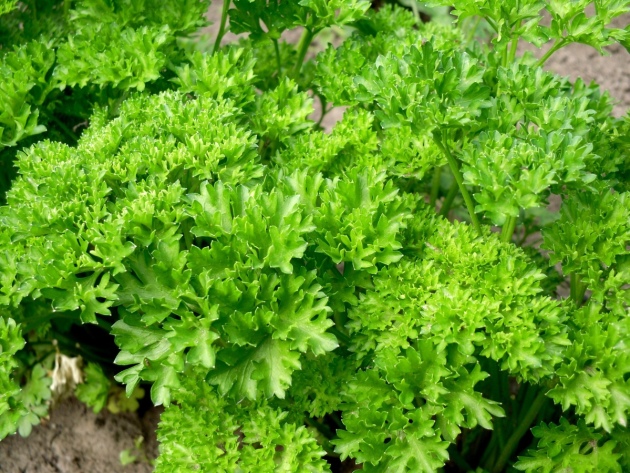

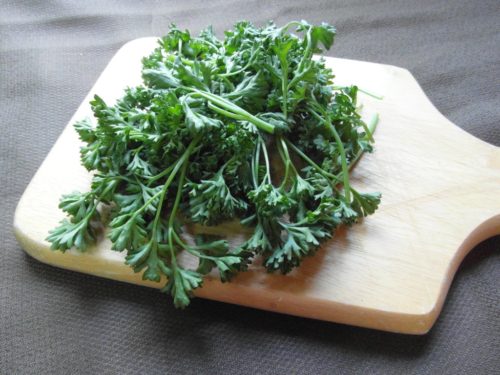
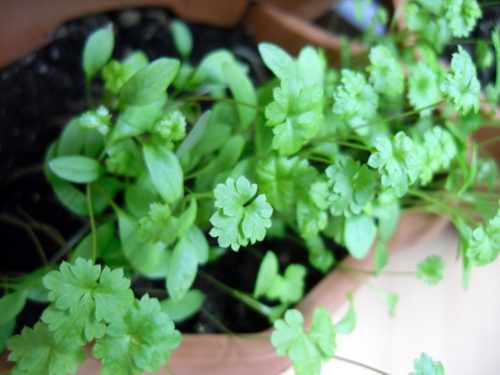
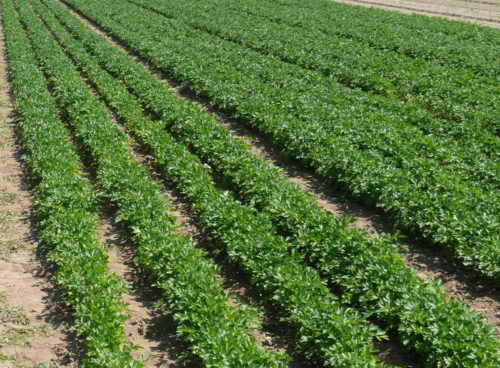
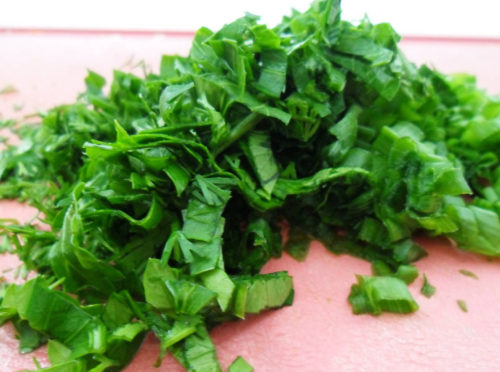
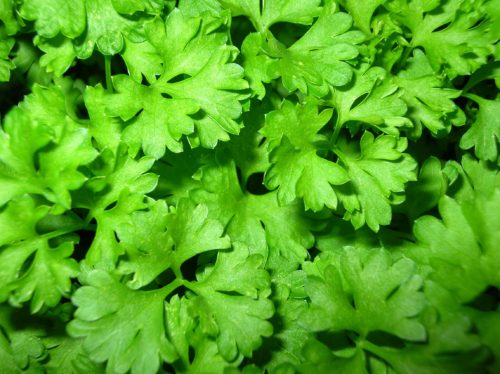
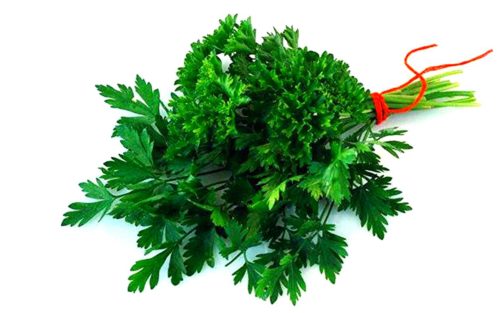
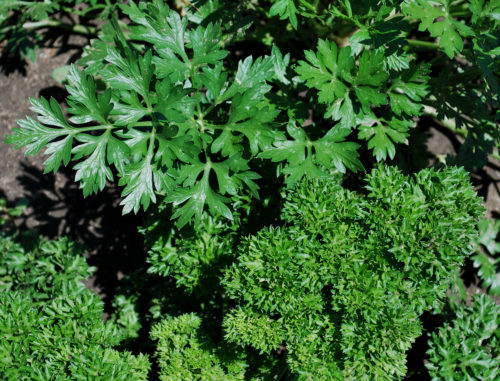

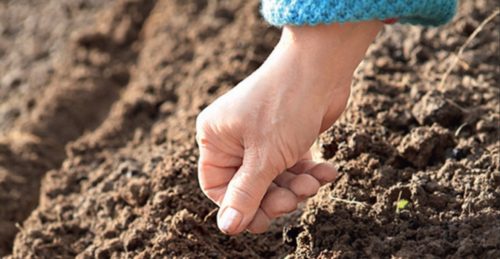
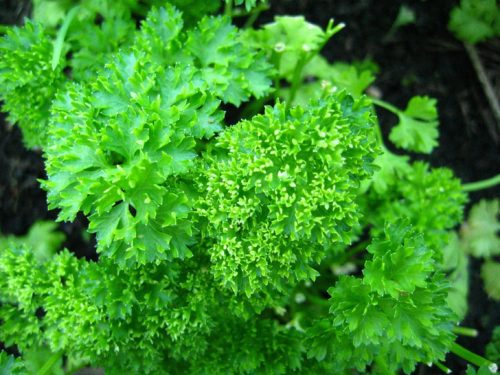
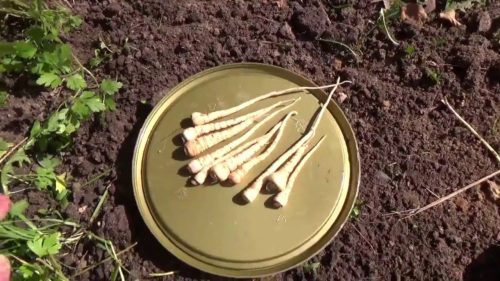
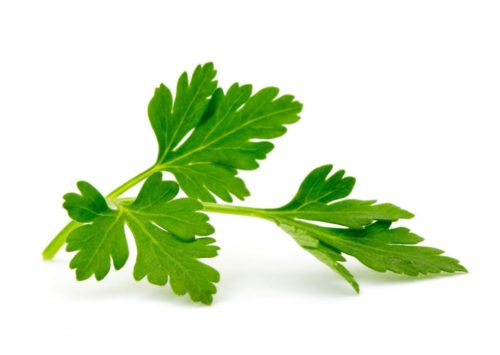
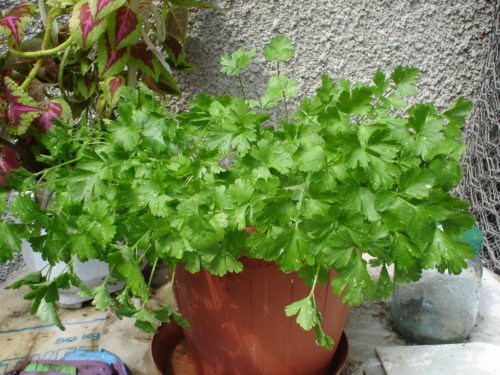
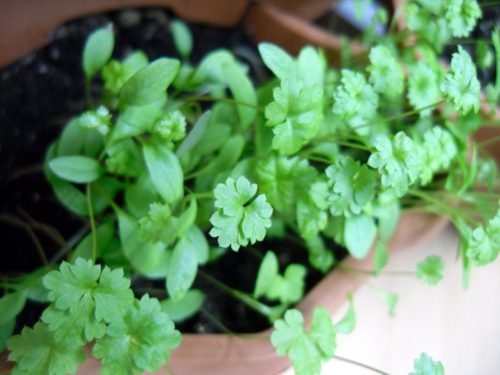
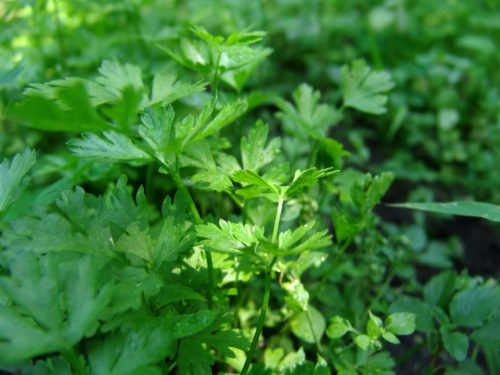












 Start a discussion ...
Start a discussion ...